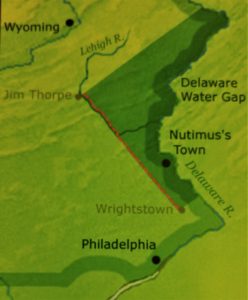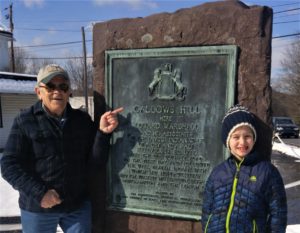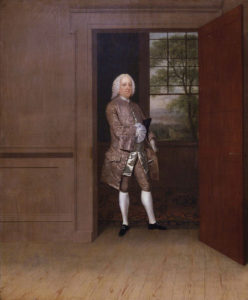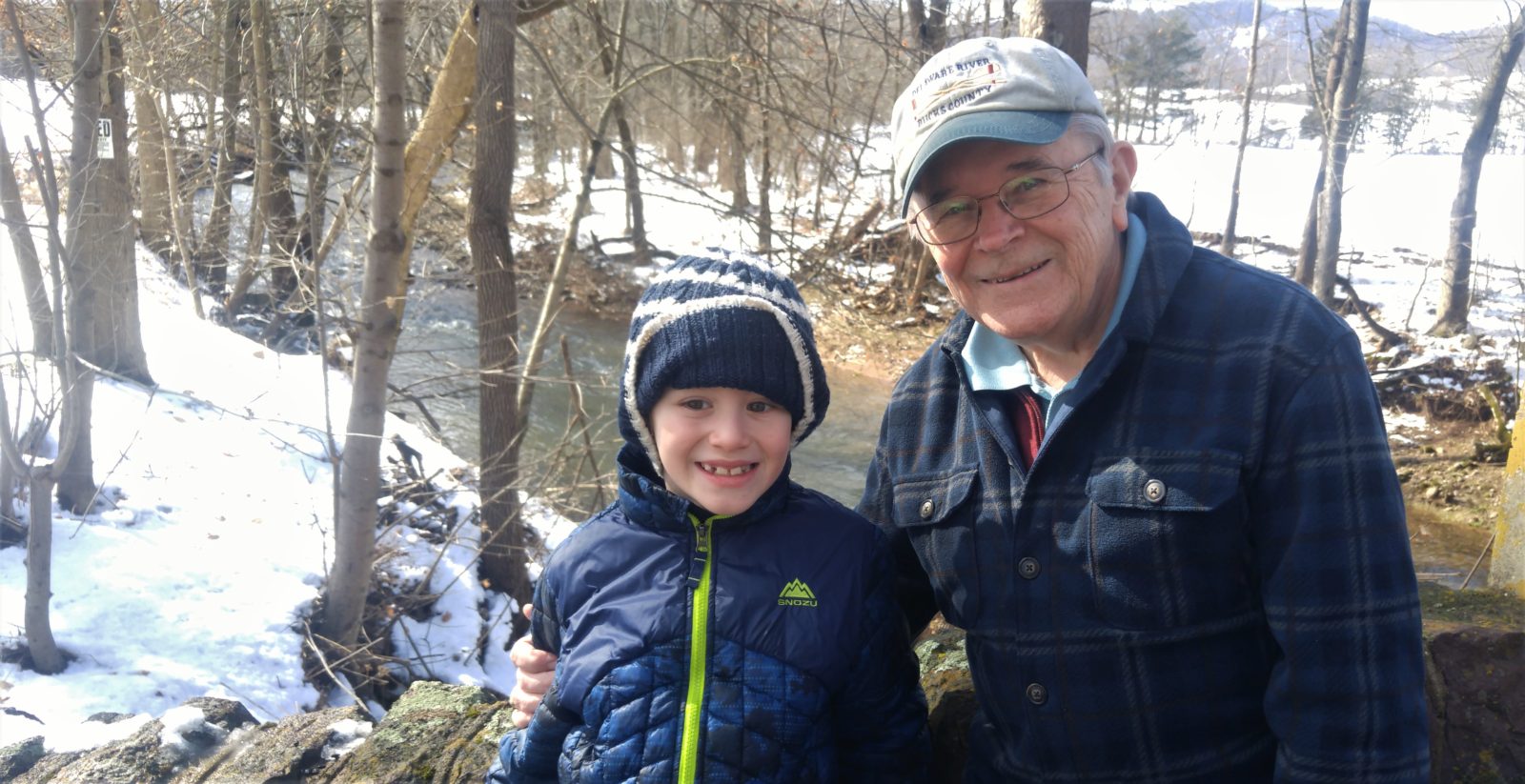The tiny village in Upper Bucks has a most interesting history.
A rapscallion of the infamous Walking Purchase of 1737 was 27-year-old Ed Marshall. William Penn’s deceitful sons hired the world-class runner to jog and run for 18 hours from a point on Durham Road in front of Wrightstown’s Quaker meetinghouse to the far reaches of the Pocono Mountains. The line of the “walk” created a vastly enlarged Bucks County that would cheat Lenape Indians out of 1,200 square miles of tribal territory. The sons subsequently subdivided and sold the acreage illegally to waves of European settlers.
It was on 600-foot-high Gallows Hill in Springfield Township where Marshall left Durham Road (today’s Gallows Hill to begin his scramble through roadless wilderness. He headed downhill on an Indian path to a creek where he leaped into history. So there we were – grand kids Dashiell, 8, and Margaux, 4, plus mom Genevieve and I ready to leapfrog that same creek. We’d experience for ourselves a piece of the great swindle and recall the history of what happened 281 years ago.
There’s no traffic light on Gallows Hill at a stone monument with a brass plaque on the very edge of the highway near a long-abandoned store. The kids rapped their knuckles on the tablet, revealing a hollow sound. “Look, Grandpa, you can see behind,” Dash exclaimed, studying how the memorial was attached to the stone in 1925. The marker is where the highway meets Gallows Hill Road, the former Durham Road that Marshall followed to Gallows Run which he leaped across. He then turned northwest on Indian trails leading to the Lehigh Valley.

How the hill and run got their names is a mystery. One story is a settler became so depressed by the loss of his barn in a fire that he hung himself at night from a large oak tree, discovered by his sons in the morning. I favor another version: Ed Marshall snapped his galluses by jumping too high over underbrush in spanning the run. He left the broken suspenders hanging from a tree branch, branding forever Gallows Run and Gallows Hill.
For sure, fleet-footed Ed had no time to tarry during the great land grab engineered by Thomas, John and Richard Penn in England. The trio had blown through their father’s inheritance in 1718. The boys wanted more cash and began selling land above Wrightstown that Pop never purchased from the Indians. The Lenape bristled. To reassure the tribe, Tom Penn sailed from London with a fraudulent deed including forged Lenape signatures to present to tribal Chief Nutimus. The document indicated Pop owned all land between the Delaware River and Neshaminy Creek above Wrightstown “as far as a man can go in one day and a half.”

Given his esteem for William Penn, Nutimus grudgingly agreed to oversee a walk by Tom’s representatives to define the upper extent of the tract. Nutimus anticipated a goodwill stroll. Penn, however, connived a sprint. He recruited celebrated runners James Yeats of Newtown, Solomon Jennings of Bethlehem and Marshall of Bustleton. Penn offered a prize to whomever ran furthest in the time allotted. He secretly had agents blaze a route through the wilderness from Gallows Hill to keep runners on track to the Poconos.
The Great Walk began at sunrise, Sept. 19, 1737 in Wrightstown. The athletes ignored Indian warnings not to run. Jennings dropped out from fatigue after five hours. Yeats fell in a creek and died. Marshall, 27, pushed on and at noon on Day 2 collapsed, grasping a sapling near Jim Thorpe 70 miles from Wrightstown. Penn’s surveyors then charted a northern border at right angles to the walk route until it met the Delaware just above Port Jervis on the New York border. In one fell swoop, the survey tripled the size of Bucks County, forced the Lenape to evacuate to the Susquehana River in Central Pennsylvania and made the Penns a fortune.
The tribe sued but lost. Some warriors retaliated by destroying crops, burning homes and barns, and massacring settlers within the “Walking Purchase”. They located Marshall’s home in the new territory and killed his wife and unborn twins. Henceforth, he shot any Indian he came across, bragging “I generally shut one eye, and never see him afterward.” Marshall moved to an island in the Delaware where tribesmen again attacked. He drove them off.
Skipping ahead a few centuries, our quest to leap Gallows Run proved elusive though Dash can jump pretty high. Unfortunately heavy rains and snow made had turned the creek into slippery footing. We had to settle for second best: a spirited snowball fight in a field beside nearby Crooks Creek which left plenty of smiles.
Meanwhile back in Wrightstown there’s a 10-foot-high stone obelisk with a brass plaque outside the Quaker meetinghouse. Unveiled in 1890, it’s an apology to the Lenape.
Sources include the “History of Bucks County, Pennsylvania: From the Discovery of the Delaware to the Present Time” by William Watts Hart Davis published in 1905, and “Gallows Hill” published in the Quakertown Free Press on June 10, 1929.

